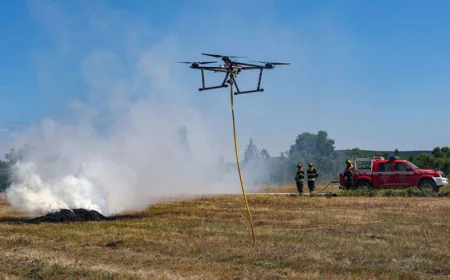Beneath the Canopy: Finding Solace on Binsar’s Hidden Trails

Want to get your story featured as above? click here!
Want to get your story featured as above? click here!
Tucked away in the Kumaon hills of Uttarakhand, India, Binsar Wildlife Sanctuary is more than just a protected patch of forest, it's a dreamscape for seekers, wanderers, and nature lovers. As a Brand professional and writer, I recently had the privilege of exploring this Himalayan haven, and the experience left me deeply inspired, both as a storyteller and as a human being.
A Conversation amidst the Oaks
My journey began at the sanctuary’s entry gate, where I met with the forest rangers. Dressed in earthy uniforms and armed with decades of wisdom, they were eager to share stories about the sanctuary’s legacy. “Binsar was declared a wildlife sanctuary in 1988,” one of them told me. “It was primarily to protect the broad-leaved Oak forests and the rich biodiversity they support.” The pride in their voices was unmistakable. They spoke of conservation and infrastructure challenges, rare wildlife sightings like Leopards, Himalayan Bear, Wild Boar, Musk deer etc. and how the sanctuary had become a quiet retreat for writers, mystics, yoga enthusiasts and other creative minds and soul searchers from across the globe. When I told them I was visiting to write an article about the sanctuary, their eyes lit up. “Write about the silence,” one of them said with a smile. “It speaks louder than most places.”
After the formalities and warm conversations, I began my 7-kilometre trek to Zero Point, the highest vantage within the sanctuary.
A symphony of exotic Trees and Birds
The forest trail meanders gently at first before climbing into thicker woods. The deeper I went into the forest towards Zero Point, the more alive it felt. Scarlet Rhododendrons lit up the trail like wildflowers in celebration. Towering Oaks arched above, forming a cathedral of green. I spotted ancient Cedars too, apart from delicate Maples, and even whispering Pines. Each tree seemed to be telling its own story.
What truly overwhelmed me, however, was the sheer variety of birds. Binsar is a birdwatcher's paradise, with about 232 species recorded here. I was lucky to spot a pair of Greater Yellow Naped Woodpeckers hammering away at an Oak trunk and the melodic calls of the Verditer Flycatcher echoing through the woods. Warblers, Red Billed Blue Magpie and Blue Whistling Thrushes fluttered around, indifferent to my presence, but deeply enriching it.
I could also hear playful Great Himalayan Barbets calling out from the treetops. Amid them all, the elegant Rufous Sibia, the gentle Oriental Turtle Dove, the watchful Grey Bushchat, and the elusive master of disguise, the Bar-tailed Treecreeper, each made a quiet, magical appearance.
The Purest Breath
As I climbed higher, the air grew colder, crisper. It felt as though the forest was cleansing every breath I took. It was a kind of purity I hadn’t experienced in my entire life, a vivid contrast to the heavy, stale air of city life. In those moments, surrounded by raw nature, even breathing felt meditative.
The Reward: Zero Point
About 6 kilometres into the sanctuary, I passed by the quaint Simba Café, a cozy rest stop nestled under towering rhododendrons and Oaks, offering hot tea and panoramic views.
From Simba, I chose to take a shortcut, a narrower, steeper path that slices through the dense forest canopy. It took me about 30 minutes and a kilometre of steady uphill trekking to reach Zero Point from Simba cafe, and while the trail was rugged and wild, the payoff was immense.
When I finally reached Zero Point, I was greeted by a panoramic view that seemed to stretch into eternity. The snow-capped Himalayan peaks like Nanda Devi, Trishul and the Panchachuli range, stood like silent sentinels in the distance. The sky was deep blue, the air still, and the only sound was the occasional rustle of wind through the forests.
It’s hard to put into words what it felt like to stand at Zero Point. Not just the view, the trek or the silence, but the connection to something much greater than oneself.
A Sanctuary for the Mystics and Writers
Binsar is not only a sanctuary for flora and fauna, it is a haven for yoga practitioners, mystics, writers, and creative souls. Many come here not just to escape, but to create. There’s something about these forests that seems to unblock thoughts, loosen creative knots, and offer clarity. In fact, I met a Spanish writer meditating near the KMVN (Kumaon Mandal Vikas Nigam) Guest House who told me she visits Binsar every year to finish her books. “The forest edits my work better than I do,” she said, laughing.
Off the beaten path, but the path needs paving
If there’s one aspect that demands attention, it’s the approach road to the KMVN rest house inside the sanctuary. The stretch is narrow, potholed, and often tricky for regular vehicles. While the remoteness adds to Binsar’s charm, better infrastructure would ensure safety of visitors without disturbing its ecological balance.
The Trekking Experience
All in all, I trekked for nearly 6 hours that day, uphill, downhill, and across forest clearings. It was physically demanding, yes, but deeply fulfilling. There’s a unique rhythm to walking in the high Himalayas, where each step connects you more intimately with the landscape. You come to appreciate the crunch of dry leaves, the call of a distant bird, the rustle of a deer just out of sight.
As I left the sanctuary, my mind brimming with thoughts and heart full of quiet joy, I understood what the forest ranger meant, here the hush of the forest speaks louder to your soul than the endless cacophony of cities ever could.
Major Resorts: The Tree of Life Grand Oak Manor, Khali Estate and Mary Budden.
Best Time to Visit: Throughout the year except Monsoons (July- August)
Nearest Railhead: Kathgodam - 95kms from Binsar Wildlife Sanctuary
Contact Details: +91- 9560627420
About the Author: Siddhartha Sen is a seasoned Brand Specialist who blends strategy with storytelling. When he's not shaping brands, he's chasing flavours and footpaths - from bustling kitchens to Himalayan trails.












































.jpg)




































